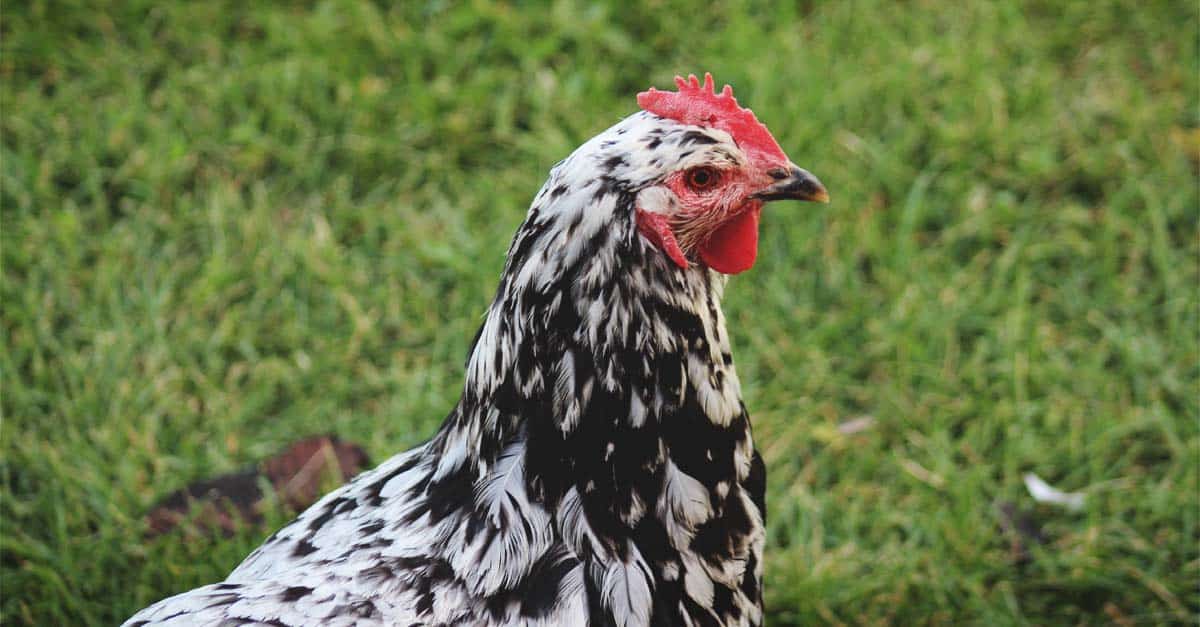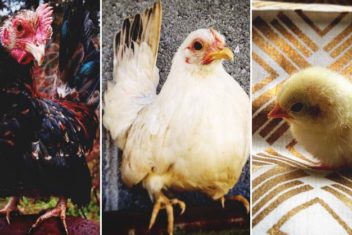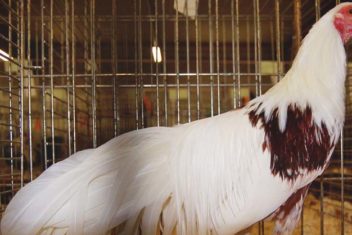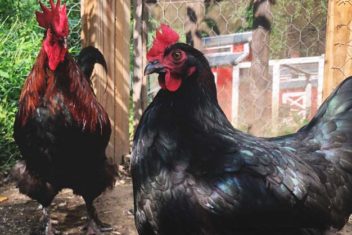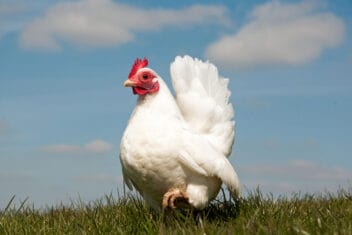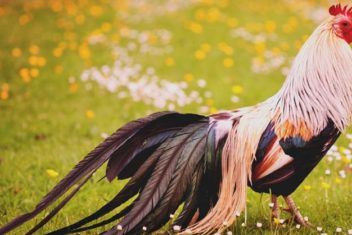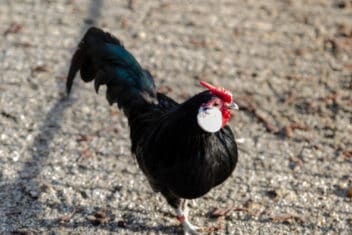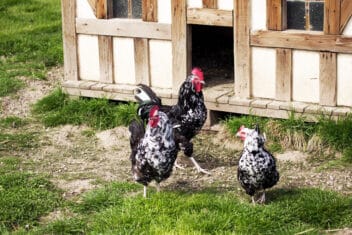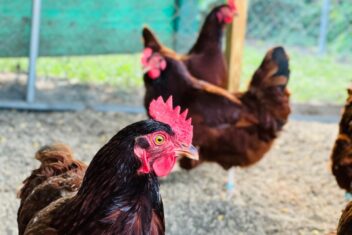The Java chicken is a very unique and old bird with a captivating history and many very useful traits for the modern, sustainable farmer. Java chickens were bred to be the ideal all-in-one bird for egg-laying and meat production. In addition to their plentiful meat and egg production, Mottled Javas are a stunning breed that everyone will want on their farm.
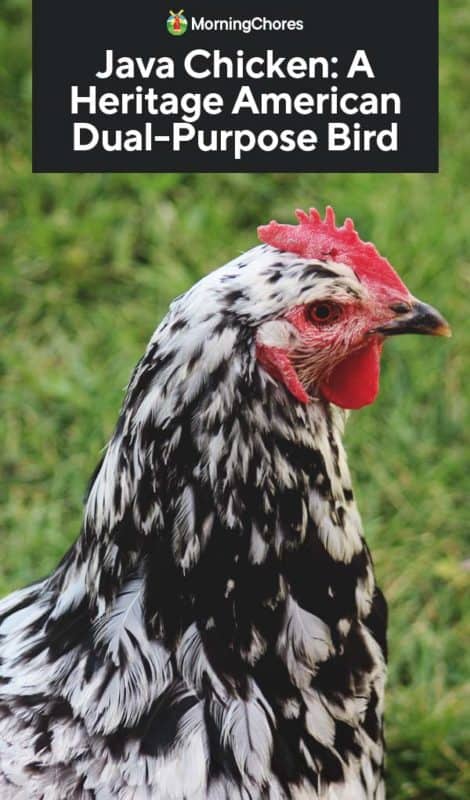
About Java Chickens
One interesting thing about the Java chicken is their heritage. Javas are the second oldest chicken breed that was developed in America, following the Dominique. In 1883, Black, Mottled and White Javas were accepted into the American Poultry Association. Unfortunately, in 1910, the White Java was removed from the standard after some consideration due to the fact they resembled the White Plymouth Rock too closely.
White Javas are still being bred by a dedicated group of breeders, along with the stunning Auburn Javas. Despite the unfailing dedication to the breed, neither color variation has gained acceptance into the American Poultry Association yet.
Java Characteristics
1. Size and Weight
Since Java chickens are a dual-purpose chicken, they are fairly large chickens with a long back and rectangular-shaped bodies. Another notable characteristic of the Javas is their full, well-rounded breasts which make for an appealing table chicken.
Java roosters are pretty large birds, weighing around 9.5 pounds at full-grown weight. The hens of this breed weigh much less, averaging 7 pounds when fully grown.
2. Temperament
Javas are a good, calm breed that prefers foraging to captivity and makes excellent mothers. Due to their heritage lineage, these birds are very hardy and lively chickens with alert personalities that keep them on the lookout for potential dangers such as bloodthirsty predators.
3. Egg Production
Dual-purpose breeds have lower egg production than a chicken bred specifically for egg production, but as far as dual-purpose breeds go, Javas have decent production.
Javas may take a bit longer to begin laying eggs than some breeds due to their heritage nature. However, when your chickens begin laying, you can expect an average of 150 eggs per year.
4. Meat Production
As you can probably imagine based on their weight, this breed does produce a sizable amount of meat. One drawback to the visual appearance of Javas is their yellow skin. White skin is certainly more aesthetically pleasing than yellow skin, but the meat tastes delicious either way.
Caring for Java Chickens
1. Feeding and Nutrition
From hatch to about 14 weeks of age, it’s best to supply your growing Java chicks with good quality chick starter/grower. Somewhere between 14 and 16 weeks of age, it’s a good idea to transition your young birds to laying feed to prepare your chickens for egg-laying.
Once your hens are laying, you may notice an occasional soft-shelled egg. If you do, it’s more than likely due to a small calcium deficiency. You can purchase oyster shells from any feed store to supplement your hen’s diet. If you prefer a cheaper option, you can remove the membrane from your eggshells and crush them for a calcium supplement.
Whichever option you choose, feed them to your hens in a separate dish so the hens can eat them as they need the supplementation.
2. Housing and Fencing
As a dual-purpose breed, Javas will do best with as much space as possible in the chicken coop since they are larger chickens. A minimum of 4 square feet per chicken is ideal to ensure everyone has enough room to coexist peacefully.
Javas will do best with a free-range environment or a very large run since they enjoy foraging. If you choose to keep your birds in a run, a minimum of 10 square feet per bird will give everyone plenty of room to enjoy scratching about and being chickens.
3. Health Issues and Care
Heritage breeds often have particularly hardy immune systems due to being bred over many decades, and Javas are no exception. Of course, any chicken can be subject to getting ill, and diligence on your part to exercise healthy biosecurity and flock management practices will go far in prevention.
Internal and external parasites such as worms, mites, and lice can plague any flock and are detrimental to their health. When these parasites are observed, it’s best to eliminate them from your flock immediately to keep your birds as healthy as possible.
4. Breeding
There are many groups of dedicated Java breeders that have helped recover this breed after some of their numbers dipped dangerously low.
If you’re passionate about breeding projects and color variations not yet accepted into the Standard of Perfection, the Java is right up your alley. Auburn Java chickens are an especially stunning breed in need of breed ambassadors.
Java Breed Alternatives
1. Jersey Giant
The Jersey Giants were actually bred from Javas along with other breeds, but they have certainly come far from their Java lineage. Jersey Giants are very large, dual-purpose chickens that do even better for meat production than Javas. Black Javas and Jersey Giants look very similar, so they make good substitutes for each other.
Java Chicken Fun Facts
The beetle green sheen that shines on the Black Java’s feathers is noted for being the most brilliant shine other than that of the Langshan.
Many sustainable farmers love a good old heritage breed for their incredible meat, eggs, free-ranging, and mothering qualities. If you’re that farmer, this breed might just be the one for you!
